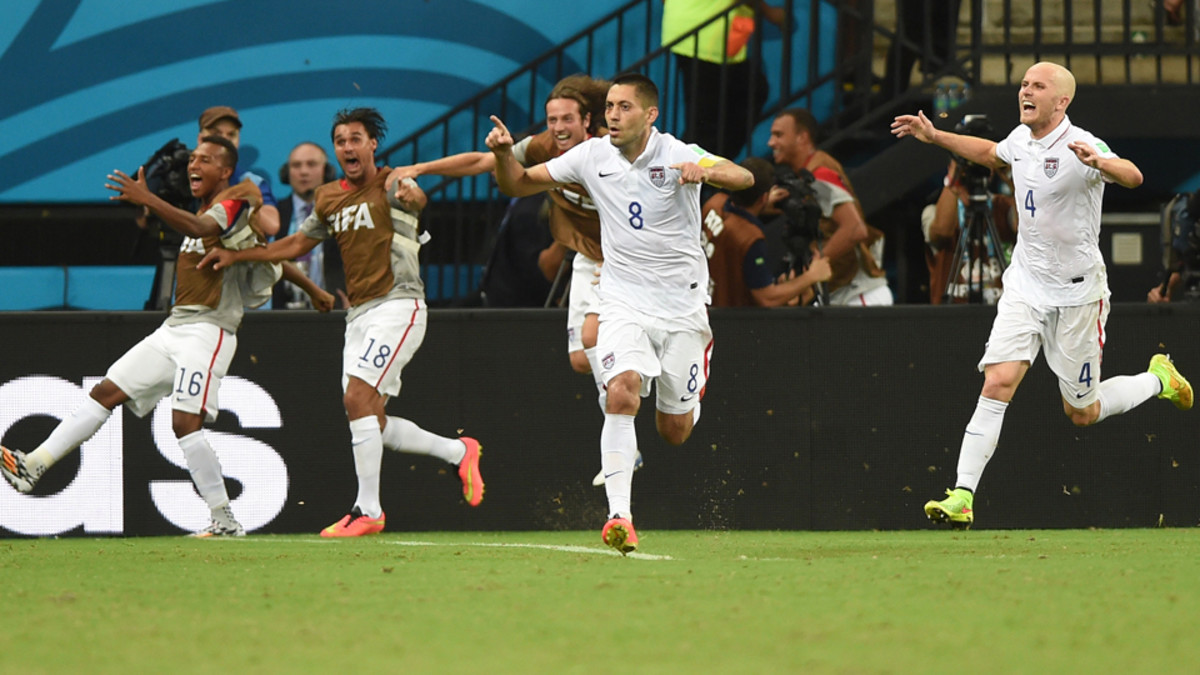
USA soccer growth dependent on mentality, not class of athlete
Another World Cup, and there’s the U.S. again, nose pressed against the glass, watching as Germany hoists the trophy and Argentina rues how close it came. Even 13 days after the U.S. men’s national team’s elimination at the hands (and feet) of a poorer and smaller nation, we can still hear echoes of the jingoist’s consolation: If only America’s best athletes bothered to play it, there’d be no losing in soccer to Belgium, the least populous country in the field. If only, the lament goes, LeBron James played the game.
A country’s sporting success typically correlates with population and wealth, which is why Soccernomics authors Simon Kuper and Stefan Szymanski concluded that the U.S. is among the world’s top four underachieving soccer nations—a country whose national team ought to score almost three-fourths of a goal more per game than it does. But the best way to close the gap between achievement and potential isn’t to detail all six feet, eight inches of the next LBJ to a soccer pitch.
On Top of the World: Germany tops Argentina, claims 4th World Cup title
Brazil’s great soccer players are almost all sub-six-foot, because soccer privileges the short and stocky, whose power rests in the legs, not in broad LeBronian shoulders. Witness the stars of this World Cup, like Argentina’s Lionel Messi (5-7) and Germany's World Cup final hero Mario Gotze (5-9). There’s an ideal sport for every athlete, and the lucky ones find it. The most creative post player in NBA history, Hakeem Olajuwon, would have been condemned to life as a goalkeeper if an aid worker in Lagos hadn’t sent him to Houston on a basketball scholarship.
Brazil produces its stars despite having only 60 percent of the population of the U.S. and 20 percent of the per capita income. Thus, for U.S. soccer, cracking the soccer code is less a matter of numbers or resources than it is a mentality. In his book Brilliant Orange, David Winner makes the case that the Netherlands, despite a population of less than 17 million, owes its place as a soccer power in part to an eye for space that can be discerned in Dutch landscape painting.
North American sports have been open to foreign influences before and been the better for it: An influx of Slavs and Scandinavians introduced the open style of hockey that helped turn a goon-ridden NHL into today’s crowd-pleasing spectacle, while recent successors to basketball’s Dream Team dialed back the one-on-one mindset after losses to surgical-passing teams from Europe and Latin America.
WAHL: The Two Brazils, revisited
During the recent NBA finals, the San Antonio Spurs seemed to be staging an exhibition calculated to make a basketball fan of any soccer nut. Hunting angles and using the entire court, San Antonio unlocked all the possibilities of the extra pass to beat LeBron himself with a team that featured nine players born outside the U.S.
It’s not that Americans aren’t capable of grasping the subtle synergies that soccer-style thinking rewards. It’s that, in a culture that lionizes rugged individualism and what a Texas football coach might call want-to, we don’t condition young athletes to think like collectivists. They’re prized, rather, for bullheaded skills such as firing off the line or turning on an inside fastball.
In Brazil, the U.S. team won justified praise for just that kind of straight-ahead spirit. But the lead-in to SportsCenter still reserves a spot for that night’s rim-rattling sally to the hoop, not some goal painstakingly built from the back. The huge stateside TV ratings for this World Cup could mark the beginning of a change.
Brazil falls short, but its World Cup provides unforgettable theater
The more we lose ourselves in the game, the more likely kids will play it informally and improve the ball skills that the postmortems concluded were the U.S. players’ biggest shortcoming. We’d realize that progress comes not from retrofitting our most athletic specimens as soccer players, but from marinating several generations in the game’s nuances so that even the casual sports fan begins to appreciate—to borrow from the Uruguayan writer Eduardo Galeano—the sun and shadow of the sport.
The roaring mouse of this World Cup, Costa Rica, has a larger segment of its population, 27 percent, playing futbol than any country on earth, and there’s a cultural multiplier effect in that kind of environment: More animated conversations take place in more corner bars, which confer more importance on the sport, which leads to broader apprehension of the game, which results in a better national team. And those lively conversations have begun here.
It’s not so much a matter of whether LeBron were to play soccer. During this World Cup he was one of millions of Americans following the sport, tweeting out admiration for his eponym, the winner of the Golden Boot as top goal scorer, Colombia’s James Rodriguez.
And that’s a start.




